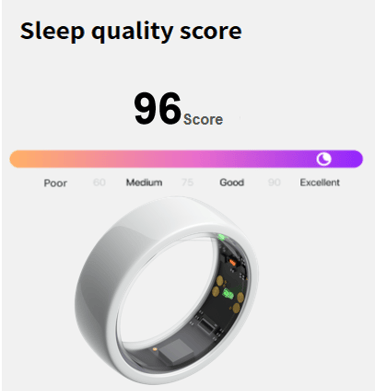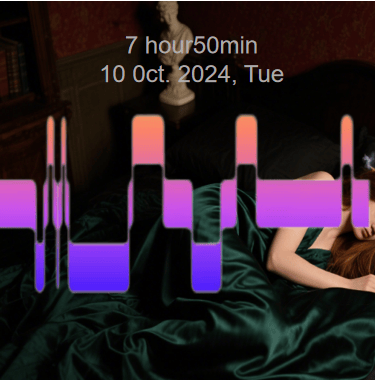The Potential and Applications of Smart Rings in the Healthcare and Medical Fields
7/10/20255 min read


Introduction to Smart Rings and Their Technology
Smart rings are advanced wearable devices that have gained traction in recent years due to their compact design and multifunctionality. Unlike traditional devices such as smartwatches and fitness bands, smart rings prioritize comfort and subtlety while offering a range of features that cater to different user needs. These devices are designed to fit snugly on a finger, enabling them to monitor various health metrics without the bulkiness often associated with other wearables.
The technology behind smart rings comprises several sophisticated components, including sensors, connectivity features, and optimized battery systems. Sensors are the core of smart rings, enabling continuous tracking of vital health metrics such as heart rate, body temperature, and sleep patterns. These sensors gather data efficiently, often utilizing advanced algorithms to ensure accuracy and reliability. Some smart rings also incorporate additional sensors capable of detecting more specialized metrics, such as blood oxygen levels, offering comprehensive insights into an individual’s health.
Connectivity is another crucial aspect of smart rings, allowing them to interact seamlessly with smartphones, tablets, and other devices. Most smart rings utilize Bluetooth technology to facilitate real-time data synchronization and communication, ensuring that users can access their health information effortlessly. This connectivity also enables smart rings to integrate with healthcare applications for improved monitoring and analysis, showcasing their potential in managing personal health.
Battery life is essential for the functionality of smart rings; hence manufacturers design them to be energy-efficient while maintaining robust performance. Many smart rings can last several days on a single charge, unlike smartwatches, which often require more frequent charging due to their larger displays and added functionalities. This enduring battery performance contributes to their appeal, particularly for those who prioritize long-lasting wear.
Monitoring Health Metrics with Smart Rings
Smart rings have emerged as innovative devices that monitor various health metrics, providing users with valuable insights into their well-being. They are designed to collect data on parameters such as heart rate, sleep patterns, activity levels, and blood oxygen saturation. With the integration of advanced sensors and health tracking technology, these compact devices can effectively gather and analyze health information in real time.
The measurement of heart rate is one of the primary functions of smart rings, which utilize photoplethysmography (PPG) technology to capture blood volume changes in the microvascular bed of tissue. By analyzing this data, users can monitor their heart rate during various activities and rest, enabling them to better understand their cardiovascular health. Accurate heart rate tracking is essential for evaluating overall fitness levels and recognizing potential heart-related issues early.
Sleep patterns are another crucial health metric that smart rings can track. They assess sleep duration, quality, and cycles, providing insights into a user’s sleeping habits. By analyzing this data, individuals can identify disruptions in their sleep, which could lead to health complications over time. Understanding sleep patterns is essential for managing well-being and improving daily functioning.
Additionally, smart rings can measure activity levels through accelerometers that track movement and exertion. This data allows users to set fitness goals and stay motivated, essential for maintaining a healthy lifestyle. Blood oxygen saturation monitoring, which is particularly useful for individuals with respiratory conditions, provides vital information about respiratory health by gauging how well oxygen is being delivered throughout the body.
The insights garnered from these health metrics empower users to make informed decisions regarding their health, enabling preventative care and improving chronic disease management. Recent studies have shown that continuous monitoring can lead to significant enhancements in patient outcomes by facilitating timely interventions. Overall, smart rings represent a promising advancement in personal health monitoring, blending technology and health in an increasingly interconnected manner.
Applications of Smart Rings in Healthcare Settings
Smart rings have emerged as innovative devices that can profoundly impact healthcare settings through various applications. One of the primary uses of smart rings is in remote patient monitoring. These wearable devices are equipped with sensors that can track vital signs such as heart rate, temperature, and sleep patterns in real-time. For example, hospitals have begun implementing smart rings to monitor the health of patients with chronic illnesses, allowing healthcare providers to receive timely data and intervene when necessary. This capability not only enhances patient care but also reduces the need for frequent in-person visits, thus optimizing hospital resources.
Another significant application is in post-operative care. Smart rings can assist in monitoring patients recovering from surgery by tracking their physical activity levels, sleep quality, and overall physiological metrics. By utilizing this data, healthcare professionals can assess recovery progress and identify potential complications early. A study carried out in a leading hospital highlighted how using smart rings reduced the rate of readmissions by enabling proactive management of post-surgical patients. Consequently, integrating such technologies facilitates improved outcomes and enhances patient satisfaction.
Furthermore, smart rings play a critical role in clinical trials. Researchers utilize these devices to collect data more efficiently and accurately than traditional methods. For instance, smart rings can automatically record patient adherence to medication schedules or track responses to treatment protocols in real-time. This ensures more reliable results and enables faster adjustments to study parameters as necessary. The integration of smart rings with existing health systems has proven beneficial in streamlining data collection and analysis, enhancing overall research efficiency.
As the healthcare industry continues to evolve, the application of smart rings signifies a shift towards more personalized, data-driven patient care, highlighting their potential within modern medical settings.
Future Trends and Challenges for Smart Rings in Healthcare
The landscape of healthcare technology is undergoing rapid transformation, with smart rings emerging as a pivotal player. Emerging trends indicate a significant integration of artificial intelligence (AI) within smart ring technology. AI capabilities can enhance the functionality of these devices, enabling real-time data analysis smart ring and providing actionable insights for patients and healthcare professionals alike. This intelligent integration promises improved healthcare outcomes, allowing for more personalized and proactive health management.
Furthermore, advancements in data privacy and security are becoming a top priority as smart rings gather sensitive health information. With increasing concerns over data breaches and unauthorized access, stakeholders are focusing on developing robust security protocols. Future smart rings may leverage blockchain technology to ensure integrated health data remains secure and tamper-proof, building trust among users and healthcare providers. smart ring
Moreover, the design of smart rings is expected to evolve, driven by consumer demands for both functionality and aesthetics. The push for sleek, stylish designs coupled with advanced technological features will likely attract a broader audience, promoting market acceptance. Manufacturers will need to innovate not just in technology but also in making these devices more user-friendly and visually appealing to encourage widespread adoption.
However, several challenges remain as smart rings look towards a future in healthcare. Regulatory hurdles are significant, as compliance with stringent healthcare regulations can complicate the development and distribution processes. Additionally, concerns regarding data accuracy and reliability may impede acceptance, as healthcare decisions must be based on consistently accurate information. Market adoption barriers, including cost, awareness, and infrastructure readiness, may also pose challenges. Addressing these obstacles will be crucial for the sustained growth and integration of smart rings into mainstream healthcare practices. smart ring factroy.


